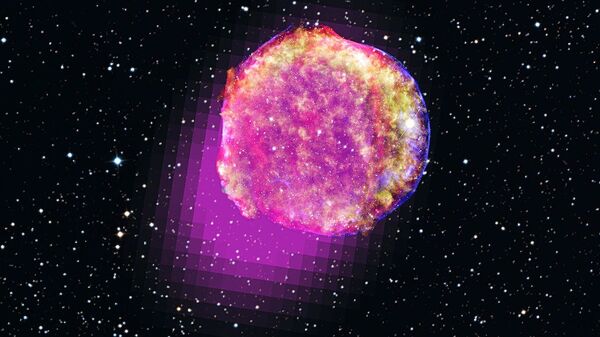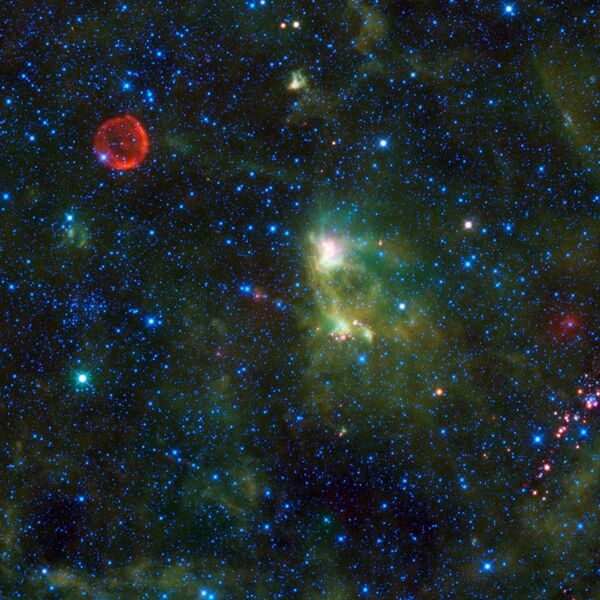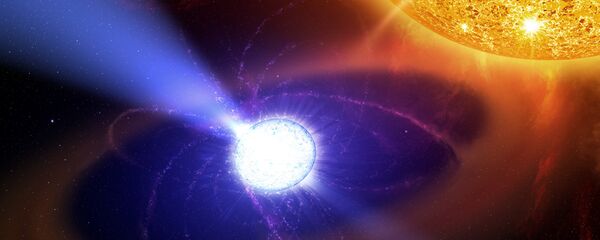"The explosion of the [Tycho Brahe] supernova in the constellation of Cassiopeia in 1572 showed the whole world that the sky is not perennial as Aristotle wrote, and that the universe is constantly evolving," Russian astronomer Marat Gilfanov and his foreign colleagues said in a study published by the journal Nature Astronomy.
To understand the essence of the study, a small introduction to the nature of supernova might be needed.
Dark Ages of Space
So-called la type supernovas arise from white dwarfs – the old, small "burnt out" stars which have used up all of their own energy sources. They sometimes emerge in binary star systems, consisting of either two white dwarfs, or a white dwarf and a red giant star.
In the first case, the supernova explodes when the dwarfs merge, and in the second – the blast occurs as a result of the accumulation of the giant's matter on the surface of the smaller star, according to the study.
Supernovas of the first type explode with approximately the same brightness, due to the physical processes that control their development. This phenomenon was used by Sol Perlmutter, Adam Riess and Brian Schmidt to show the accelerating expansion of the universe, for which they received the Nobel Prize in Physics in 2011.
The explosion is typically followed by disappearance of at least one star and emergence of a hot and luminous cloud of red-hot plasma, as well as a spate of heavy elements that appeared during the explosion. It continues to shine for few thousand years before it completely cools and fades.
Some scientists believe that this star was formed by a pair of white dwarfs, while others suggest that the supernova's ancestor was a single white dwarf "vampire" sucking matter from a nearby star which was then thrown out by an explosion from a gas cloud.
The Mysteries of Tycho Brahe
To resolve the mystery, Gilfanov and his colleagues decided to deal with what they called "cosmic paleontology"; they studied a nebula which emerged after the supernova explosion in 1572, in a bid to detect traces of its possible ancestors.
The scientists proceeded from the assumption that all the stars are located not in an absolutely empty space, but are surrounded by a large amount of ionized or neutral matter. The fate of a star affected by this matter depends on its mass and physical properties.
@Hilary_Alison a supernova in the constellation Cassiopeia: first observed by Tycho Brahe in 1572, visualised in 1980 using X-ray readings. pic.twitter.com/mxGXH4ahGe
— Niall Slater ☕ (@Niall_Slater) 1 августа 2017 г.
For example, if a white dwarf star starts to "steal" matter from a neighboring star, it will become very hot and start producing large amounts of X-rays and other forms of ionizing radiation that will specifically change a gas "cocoon", in which the future supernova will emerge.
In the case of pairs of white dwarfs, nothing of the sort will happen, and they will not change their behavior until their merger and the start of the explosion. Relying on this idea, scientists analyzed the properties of matter at the very boundary between the hot remains of the Tycho Bfrahe supernova and the cold interstellar gas environment.
So it is safe to say that the Tycho Brahe supernova emerged as a result of activity of a pair of white dwarfs rather than a white dwarf "vampire". Scientists suggested that the same process pertains to other la type supernovas, something that is expected to be confirmed in the not-so-distant future.




